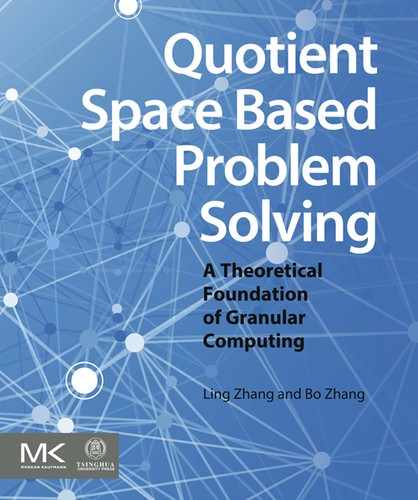Reasoning in Multi-Granular Worlds
Abstract
The study of reasoning model draws its inspiration from the observation that reasoning is one of the main intelligent activities of human beings, and of the ways by which human thinking comes from one idea to a related idea.
Reasoning over a multi-granular world is a main ability in human problem solving. The uncertain reasoning model on an AND/OR graph (OR graph) is defined. In order for computers to reason over a multi-granular world, the homomorphism of quotient structures has to be guaranteed. We show that the efficiency of multi-granular reasoning depends on the satisfaction degree of the homomorphism principle to a great extent. The truth- and falsity-preserving principles of reasoning show that the introducing structure into quotient space model also plays an important role.
The structures can also be defined by operations, so the existence, construction, and approximation of quotient operations are discussed.
The qualitative reasoning, fuzzy reasoning, and three granular computing methods are also discussed.
Keywords
AND/OR graph; fuzzy reasoning; graph; homomorphism; qualitative reasoning; quotient operation; reasoningChapter Outline
4.2 The Relation Between Uncertainty and Granularity
4.3 Reasoning (Inference) Networks (1)
4.4.2 The Projection of AND/OR Relations
4.4.3 The Synthesis of AND/OR Relations
4.5 Operations and Quotient Structures
4.5.1 The Existence of Quotient Operations
4.5.2 The Construction of Quotient Operations
4.5.3 The Approximation of Quotient Operations
4.5.4 Constraints and Quotient Constraints
4.6.1 Qualitative Reasoning Models
4.6.3 The Procedure of Qualitative Reasoning
4.7 Fuzzy Reasoning Based on Quotient Space Structures
4.7.1 Fuzzy Set Based on Quotient Space Model
4.7.2 Fuzzified Quotient Space Theory
4.7.3 The Transformation of Three Different Granular Computing Methods
4.1. Reasoning Models
(1). Non-Monotonic Logic
![]()
![]()
(2). Reasoning with Uncertainty Measure
(3). Qualitative Reasoning
(4). Empirical Methods
![]()



![]()
